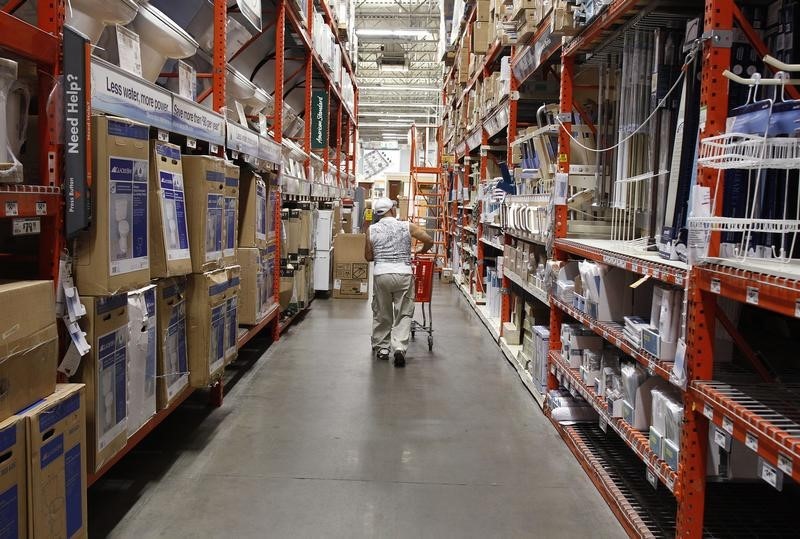By Jason Lange
WASHINGTON (Reuters) - U.S. economic growth was less sluggish than previously thought in the second quarter as exports grew more than imports and businesses raised their investments, hopeful signs for the economic outlook.
Gross domestic product expanded at a 1.4 percent annual rate, the Commerce Department said on Thursday in its third estimate of GDP. That was up from the 1.1 percent rate it reported last month and higher than analysts' expectations.
The revision incorporated data that showed businesses cut investments in buildings and equipment less than the government previously estimated, while they sank more money into research and development.
Other data released by the Commerce Department showed America's trade deficit for goods shrank in August, boding well for third-quarter growth.
"It now appears that growth is slowly making its way back on to firmer ground," said Michael Feroli, an economist at JPMorgan (NYSE:JPM) in New York.
Growth in overall business investment was revised to show a 1 percent annual rate of expansion, the first gain since the third quarter of last year, suggesting the worst of an energy-sector-led slump in business investment might be over.
The slump, fueled by a sharp drop in oil prices that hit America's energy industry, has worried policymakers at the Federal Reserve because less investment could hurt economic growth over the longer term.
The economy has struggled to regain momentum since output started slowing in the last six months of 2015 and the overall growth rate for GDP in the second quarter remained below historically normal rates. That could give grist to Republican Presidential candidate Donald Trump's argument that the economy has sickened under the Obama administration.
At the same time, consumer spending, which makes up more than two-thirds of U.S. economic activity, was robust in the second quarter, rising at a 4.3 percent annual rate, while growth in exports outstripped that of imports enough to boost GDP by the most since the third quarter of 2014.
But companies continued to run down their inventories aggressively, reducing stocks by $50.2 billion and subtracting from GDP growth, while home building also sank.
The U.S. dollar was little changed against a basket of currencies while yields on U.S. government debt were higher.
The GDP data is unlikely to have much impact on the near-term outlook for monetary policy although it could make Fed policymakers more confident the U.S. economy is resisting weaker growth abroad.
Federal Reserve Chair Janet Yellen repeated on Wednesday that Fed policymakers expect to raise interest rates by the end of the year because they worry that gathering steam in the U.S. labor market could fuel inflation.
New claims for unemployment benefits rose slightly last week but remained at levels consistent with a healthy job market, according to a separate report from the Labor Department.
The Commerce Department is due to release new inflation data on Friday.
The government also reported that after-tax corporate profits fell at a 1.9 percent rate in the second quarter, a smaller drop than initially estimated.

With profits declining, an alternative measure of growth, gross domestic income, or GDI, dropped at a 0.2 percent rate in the second quarter. GDI measures the economy's performance from the income side.